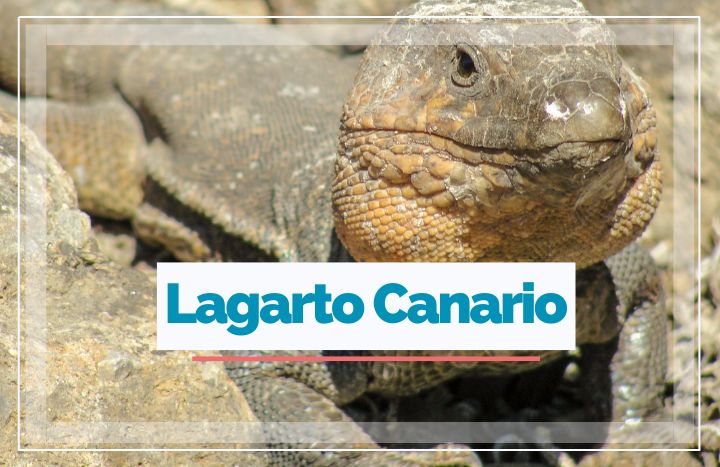Canary Lizard
The stained Canary Lizard is a large lizard with a total length of up to 50 to 60 cm cm. The appearance is robust, the head is short and wide. In terms of body size, its tail is relatively long.
The island of Gran Canaria is known for its good climate and its beautiful beaches, but stands out for something even more special, and is that it has a unique flora and fauna.
and this is where we highlight the Canary Lizard. It is scientifically known as Gallotia stehlini, it is the largest lizard on the island of Gran Canaria.
Features of the Canary Lizard
It is endemic to the Canary Islands. In addition, we can currently find these Canarian lizards in La Palma, Barranco de la Torre and Puerto del Rosario.
The body of this reptile is quite robust and has a very characteristic color, from light grey to dark red.

The overall color of the back and upper body is light gray, depending on age, gender and group of people, the color can vary from very dark to slightly pale.
Its back is covered with small spots of light yellow irregularly distributed, in addition it has two rows of yellow and blue spines.
The Canary lizard is very large, in fact it is also called a giant lizard, because it is the largest of its species today. It is worth noting that, unlike female lizards, male lizards tend to be larger and their heads are also quite large.

Where is the Canary Lizard
The habitat of the Canary Lizard extends to the entire area of Gran Canaria, from low areas to areas with steep slopes.
However, because there is very little vegetation, these types of animals are not common in the Maspalomas area, and it is not normal to find them in pine forest.
Canary Lizard Feed
Omnivorous breeding is somewhat opportunistic, because it provides very little wealth on certain platforms of life. Therefore, spotted Canary lizards can eat small and medium insects, flowers, plant residues and sometimes carrion.
The most important factor that threatens them are cats, which feed on certain populations and sometimes become the largest prey in certain places in these areas.
Its size can gain greater energy gains as a prey, and they need to reach sexual maturity at an older age, which seems to explain the population decline compared to the bout lizards.
In other areas, they live in a small area with limited nutritional resources and coexist with rats, so they are likely to take advantage of eggs and/or larvae.
Origin of the Canary Lizard
They have been known since pre-Conquest times. In the I.D. century.C there are naturist documents that prove it. The Normans in the year 1400, already refer to them, as lizards the size of a cat, but harmless.
In the 19th century European researchers, they had contact with them. And it is not until 1996 that two naturists of the island (E. Hernández and M. Siverio) call them mottled Canary Lizard.
In canarias shop, we are very much a fan of the Canary Lizard and that is why we have a collection in our online store, dedicated to them, in some >> very special souvenirs of lizards,which you will surely love.
